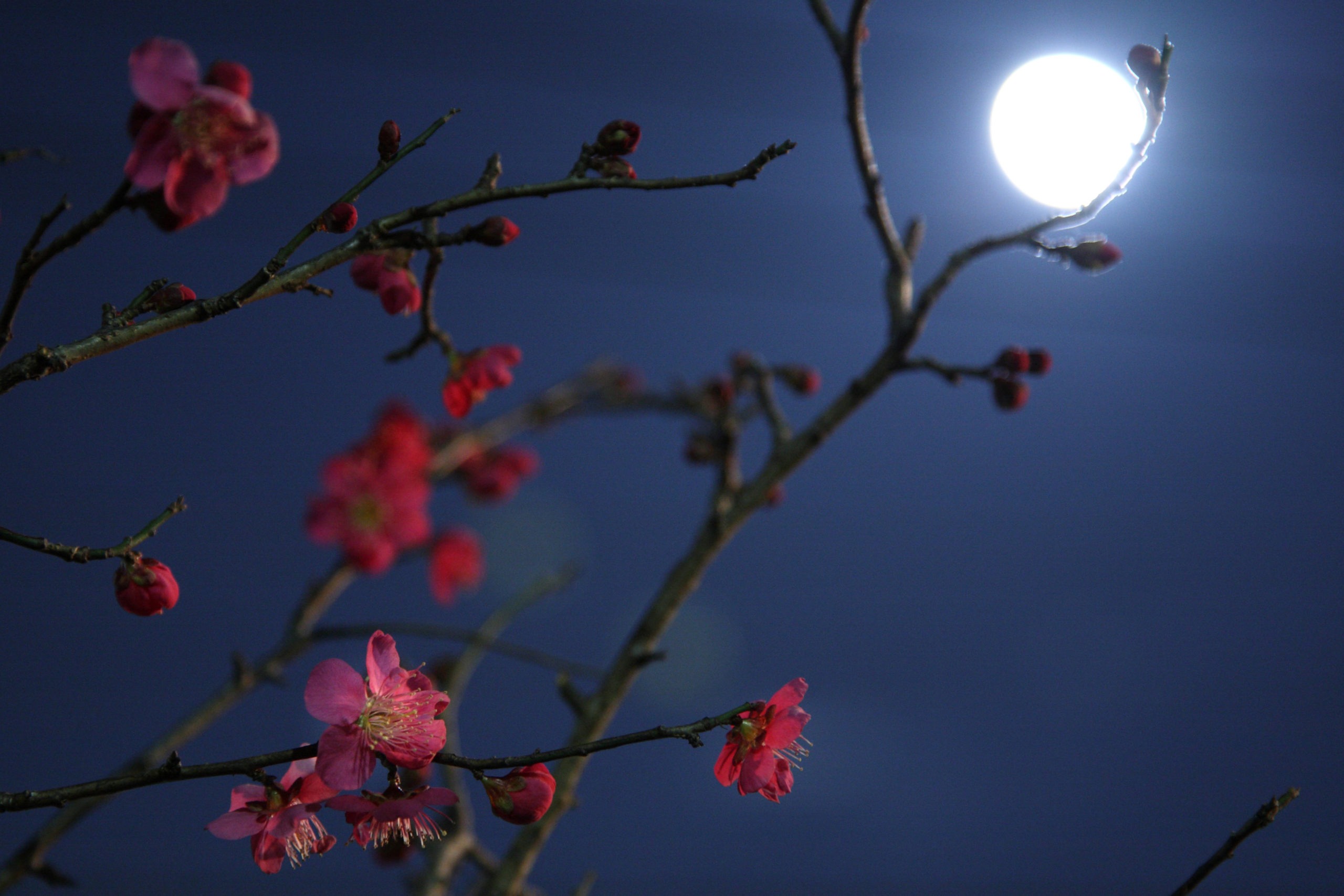
Picture Credit: mrhayata
It’s that time of year again, at least in this corner of the world: the transition from summer to autumn, the time of plums.
The plum is a kind of placeholder, an object of desire: it spans dozens of loosely related species, running the gamut from sweet to tart, from the size of a large button to that of a tennis ball. It can be green and hard, or azure and fuzzy, or a luscious purple. There are American plums, Siberian plums, River plums, Peachbush plums. Plums were one of the first fruit ever to be domesticated by humans: three of its most prominent strains only exist around human settlements. In the 18th century, the English word “plum” referred not to the fruit — it meant only something sweet; something desired.
The American poet Williams Carlos Williams pays homage to the stolen pleasure of the humble plum in “This is just to say”:
I have eaten
the plums
That were in
the icebox
and which
you were probably
saving
for breakfast
Forgive me
they were delicious
So sweet
and so cold.
I love this description of plums as an unapologetic midnight snack, still smarting with cold from the icebox. For 13th-century Chinese poet Sung Po-jen, however, it was not plums themselves that should be adored, but their flowers.
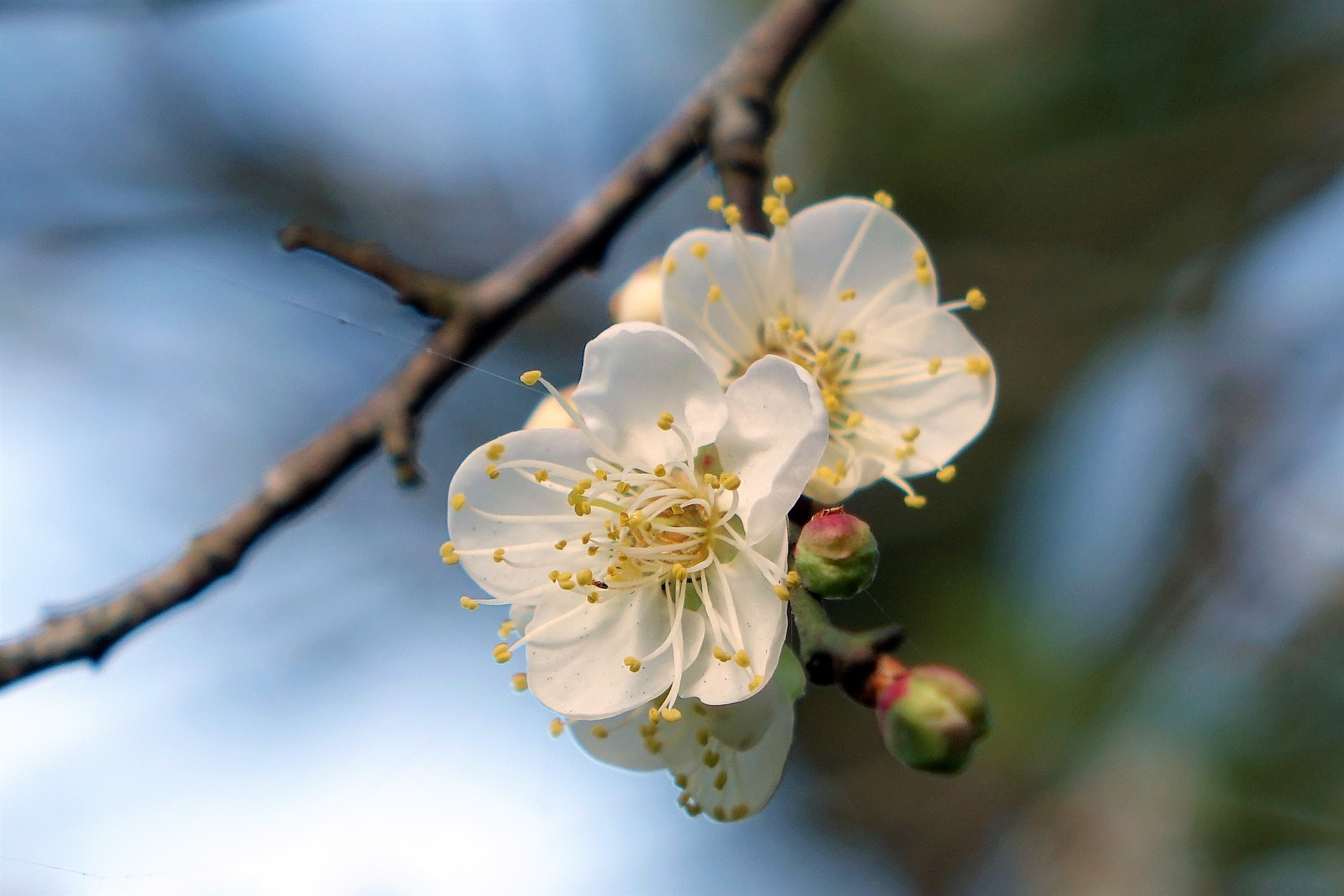
He wrote, in the preface to his 1238 Guide to Capturing a Plum Blossom:
I am so addicted to plum blossoms that I laid out my garden around them and built a pavilion to view them and published a collection of poems called The Pure and Fragile in praise of them. And still I failed to exhaust their subtlety, much like my ancestor Sung Ching, who turned to writing about clouds when plum blossoms proved too elusive.
When their flowers are in bloom, my heart is filled with the purest snow and my body is buried beneath clouded moonlight. I never tire of lingering beside a bamboo fence or a thatched hut to smell their stamens, to breathe on their petals and inhale their fragrance, and to taste their pollen. I enjoy the sight of plum blossoms whether they are facing up or down or open or folded.
Detached, refined, and rare, beyond the world of red dust…they float beyond the confines of form and the mundane words of man, and beyond the rhapsodies written on such flowers as the peach blossom or peony.
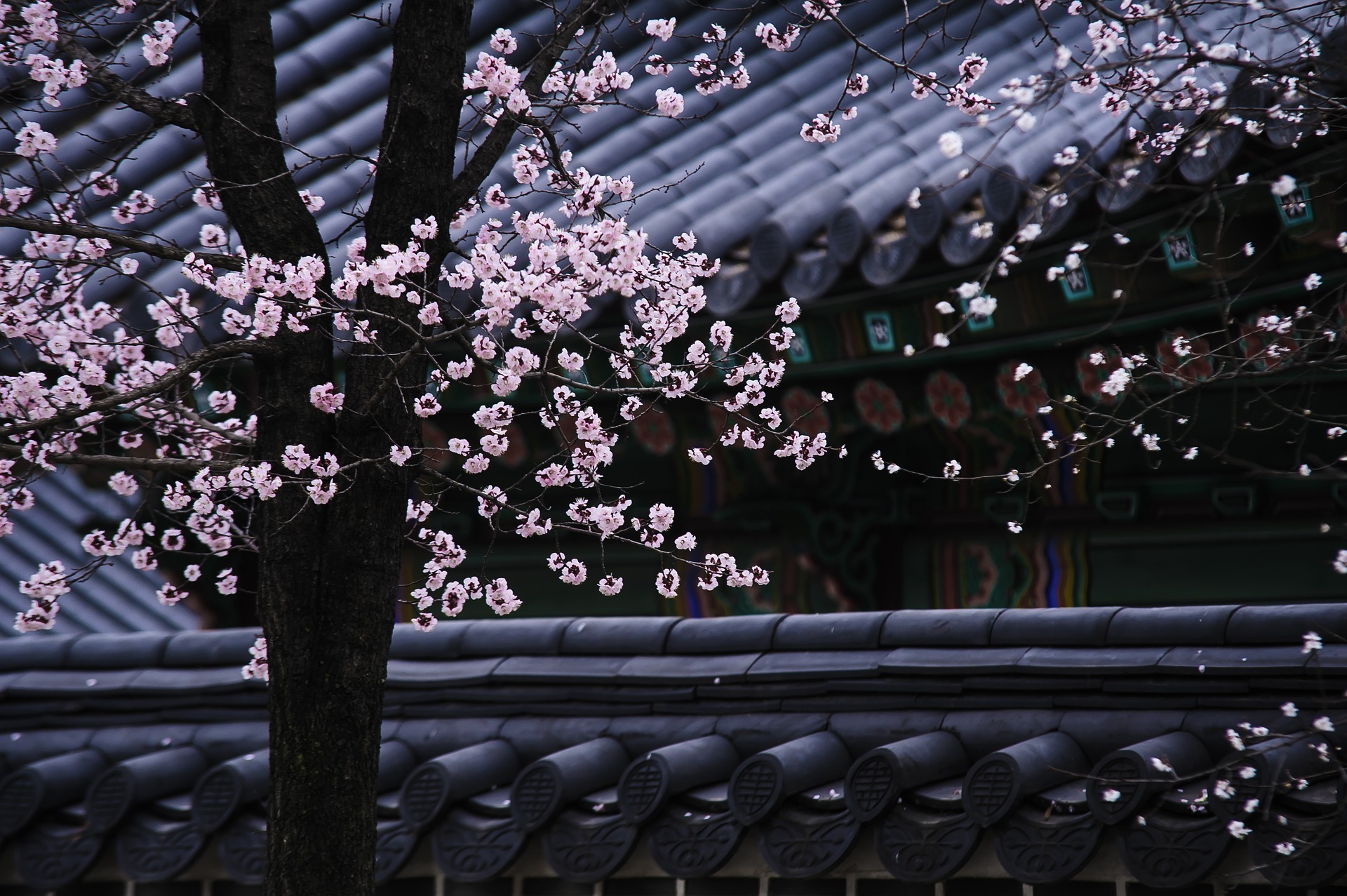
Like the blossoms themselves, the existence of this manuscript is a kind of small miracle.
In June of 1989, “a few days before the tanks rolled through Tiananmen,” wrote Red Pine, a translator of the Guide to Capturing a Plum Blossom, “I was browsing through the only bookstore in Hangchou that sold old books, and I found a hand-bound copy of the 1928 edition of Sung Po-jen’s Guide on a shelf with other dusty survivors of the Cultural Revolution.”
Printed from woodblocks in 1238, it is seen by scholars as the earliest art book in the history of Chinese woodblock printing — even the world’s earliest-known printed book of art, period. But the book would have been lost had it not been for a series of lucky breaks. Written during a period of strife and disunion in which intellectuals plumbed China’s storied history to drum up patriotism against invaders, Sung’s book, seen as an example of anti-Mongol propaganda, became treasonous when those very invaders conquered China in 1276. Although consulted privately, it disappeared from public view for at least three centuries. Then, it resurfaced in the private collection of the 16th-century painter Wen Cheng-ming. After his death, the book again disappeared for at least another two centuries, when it made an appearance in an antique market in Beijing. The book passed through the hands of Pan Ching-su, wife of famed painter and collector Wu Hu-fan, who finally passed it into the collection of the Shanghai Museum.
We know nearly nothing about the author. He was a native of the Huchou area of Chekiang province, and his real name was Ch’i-chih. Having passed the civil service examination, he was appointed to supervise the salt trade in Huaiyang. He loved plum blossoms.
Accordingly, he painted the flower in each stage of its development, from the unfurling of its bud to its petals falling to its fruit forming, in hopes of “capturing the spirit of the plum blossom.”
Embedded in Sung’s introduction is a trepidation about the worthwhileness of his project. Might his beautiful, dutiful illustrations simply end up as the patterns on China jars? But he assuages his concerns with the certainty that “surely there are like-minded people who would enjoy turning a few pages when the flowers aren’t yet in bloom, people who would prefer to fill their imaginations with the beauty of a single branch on a deserted hillside or the desolation of Yangchou before spring, people who can’t let a day pass without seeing plum flowers, people who could spend their lives thinking about plum flowers.” He insists, with finality, with force: “I have not painted plum flowers for the sake of painting plum flowers.”
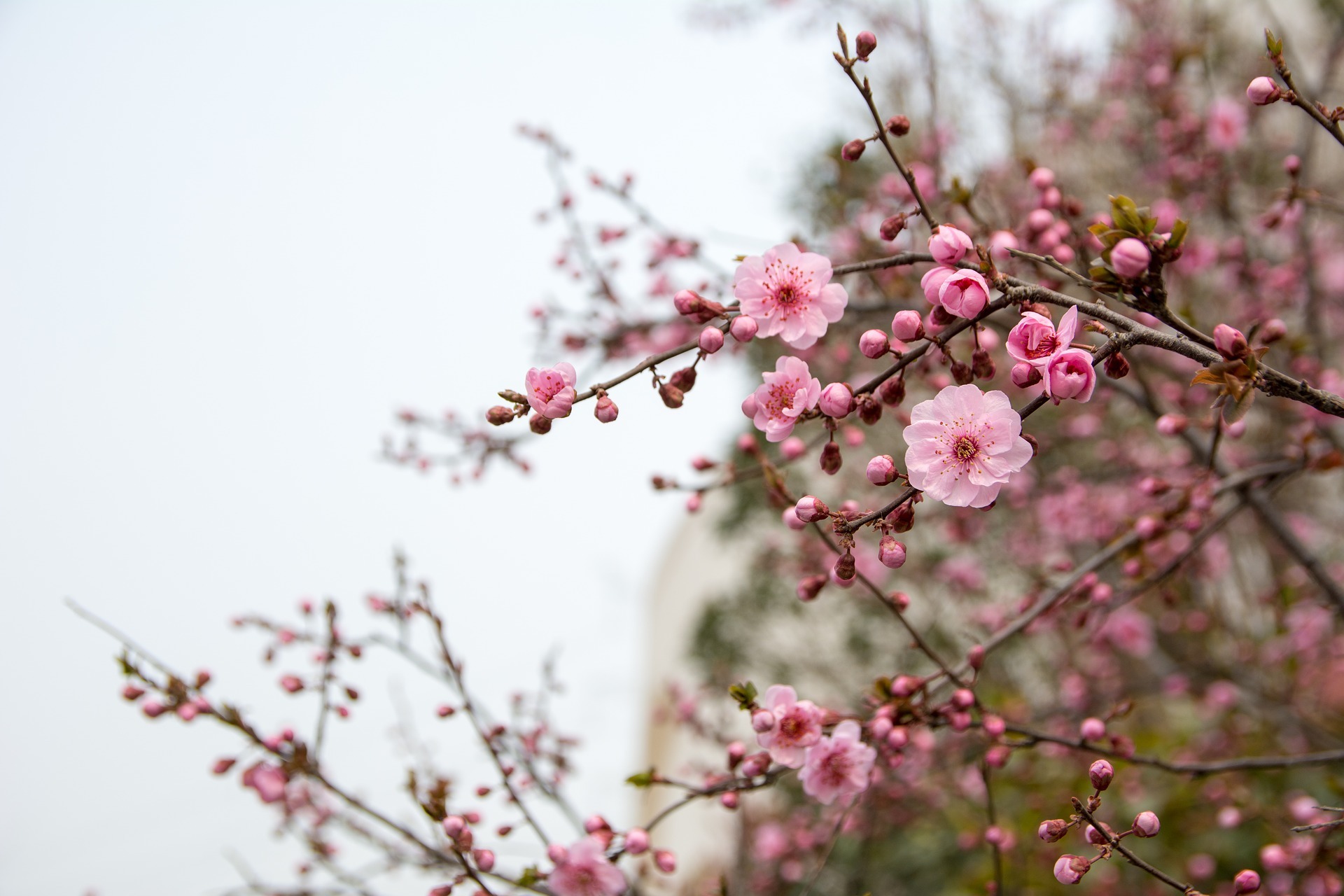
So for the sake of what or whom did he paint those flowers?
The scholar Maggie Bickford wrote that the Guide “is a book whose pages are more viewed than read.” But the poems, though often obscure, are quite beautiful. Poem 84, “Crow Landing on a Tree in Winter,” reads “This applies to men or crows/ view an icy branch with care/ the moon is bright and the rest is welcome/ but still it circles a tree three times.” The poem is suggestive on its own, from its picturesque title to its opening declaration. Yet it also makes allusions that would pass over a reader like me: Emperor Wu of the Wei dynasty, Red Pine tells us, wrote in one of his ballads, “crows and magpies…circle trees three times.” The bird’s care in locating a branch “refers to a gentleman’s care in choosing a branch.” As an amateur, it’s poetry of a different register than I’m used to, compiled with a level of devotion almost unbearable in our modern era of low attention spans. But there is something engaging, almost meditative, about the slowness of uncovering this deceptively simple book of poems.
While the prose is occasionally difficult to penetrate, the illustrations in the Guide are charming and suggestive. In Poem 16, a “brocade wrap” refers either to the blankets used to wrap infants of well-to-do families, or to the perianth, the outer covering of the plum blossom: “When their brocade wrap comes off/ children look so cute.” The illustration that accompanies it is a kind of optical illusion: either a budding blossom, or an infant’s face peeping out of a wrap.

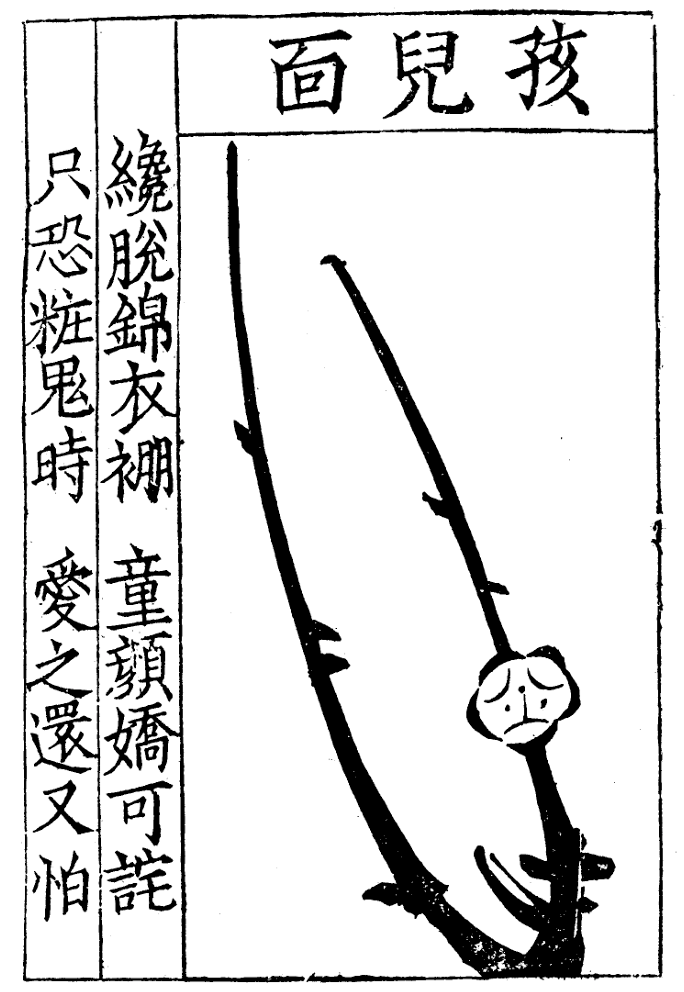

The illustration accompanying the first poem is almost calligraphic in its simplicity: a single straight line, dotted with small leaves. The second is nearly identical, but bends ever-so-slightly; the next two swoop acrobatically. With Poem 5, the first in the “Small Buds” section, white buds appear on slim branches, and the stamen of the fruit put in their first appearance in Poem 20, “Tadpole.” After the full blossoms of the poems in the “Radiant” section comes the poems of “Fading,” in which the blooms begin to wilt. The final section of the collection alludes, finally, to the formation of the eponymous fruit. In Poem 99, as petals float down like tears on the page, Sung wrote: “this drunk’s cap doesn’t fall without reason/ the autumn mums [chrysanthemums] are lovely.”
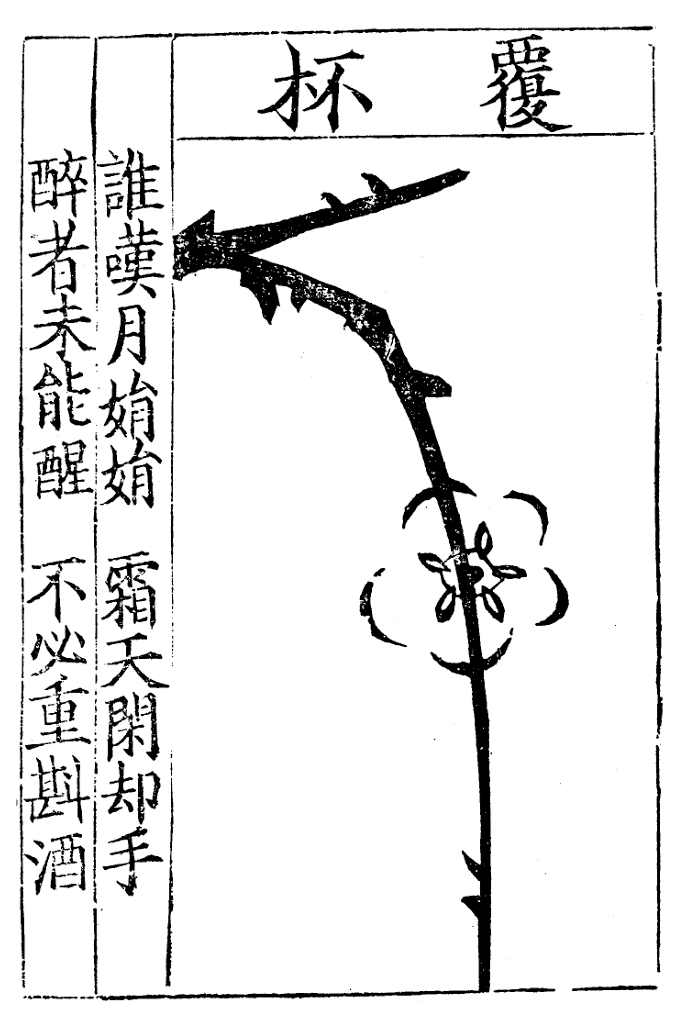
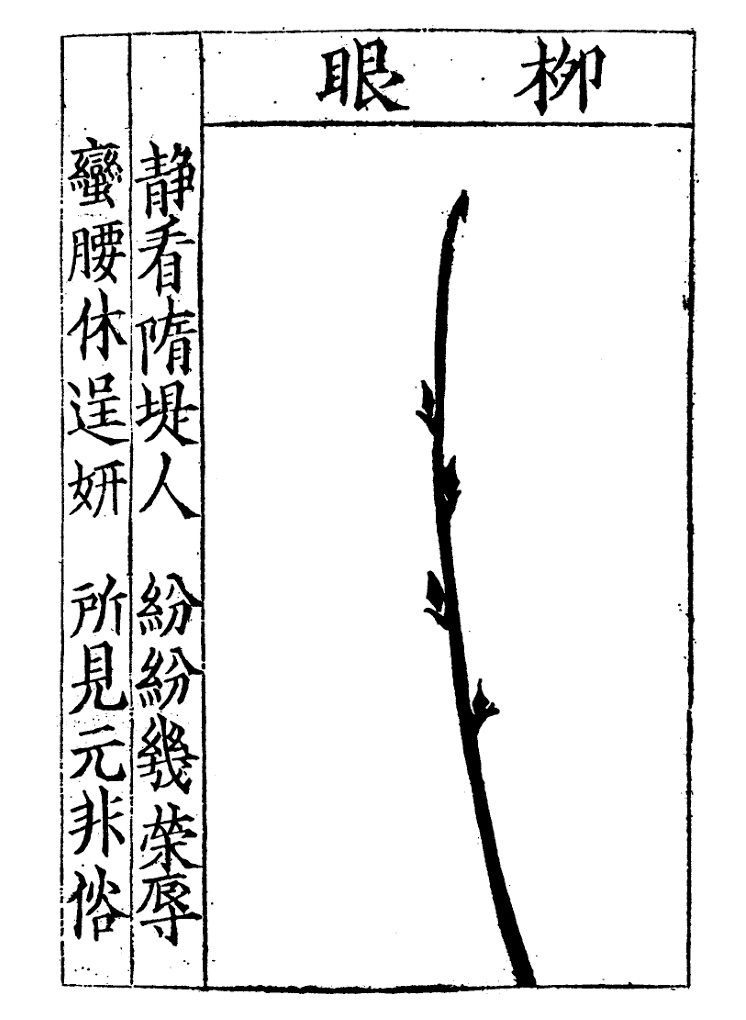
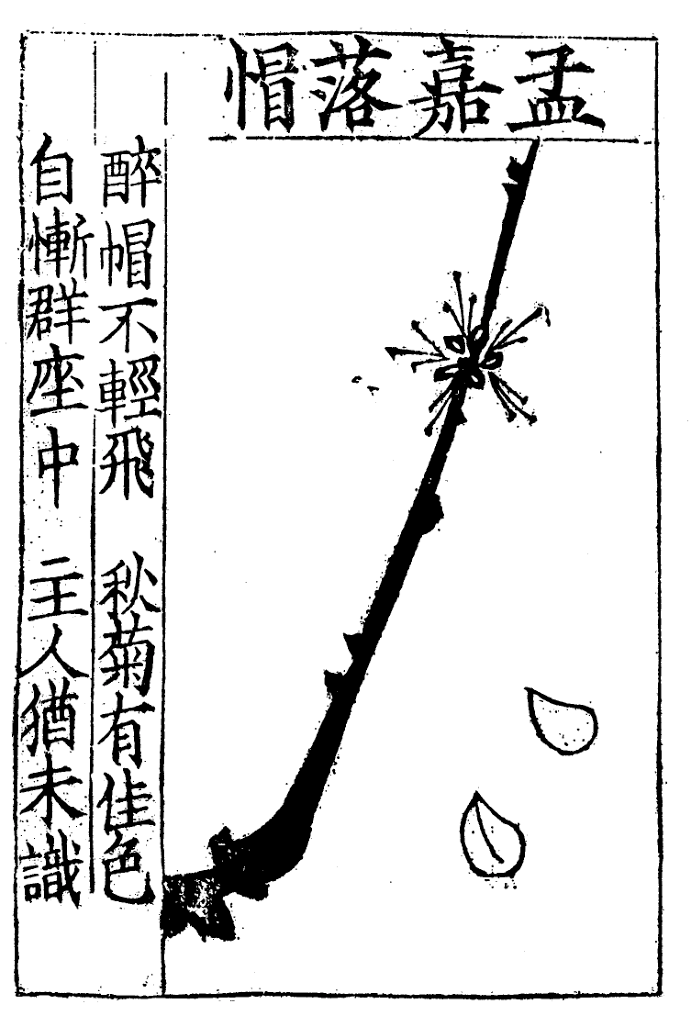
The introduction also sheds some light into why Sung himself might have chosen to compile the Guide. He recalls a conversation with a friend, who chides him: “When this flower’s whiteness and perfume are gone, it can stop the thirst of armies with its red and yellow soup and blend the perfect soup in the tripod of the state.” Only when the delicate white and pretty perfume of the plum flower are gone, this friend seems to suggest, only when the plant bears fruit, which can feed an empty belly, can it resume its practical use: “By focusing instead on the aesthetic beauty of a half-hidden tree in a garden after snowfall…you have concerned yourself with frozen verse and forgotten the root while chasing among twigs.”
Indeed, perhaps this criticism led to the final poem in the Guide:
100. Of Tripods and Soup
White replaced by greenest jade
A flavor truly sour
All too soon it’s like a dream
The soup is seasoned the world at peace
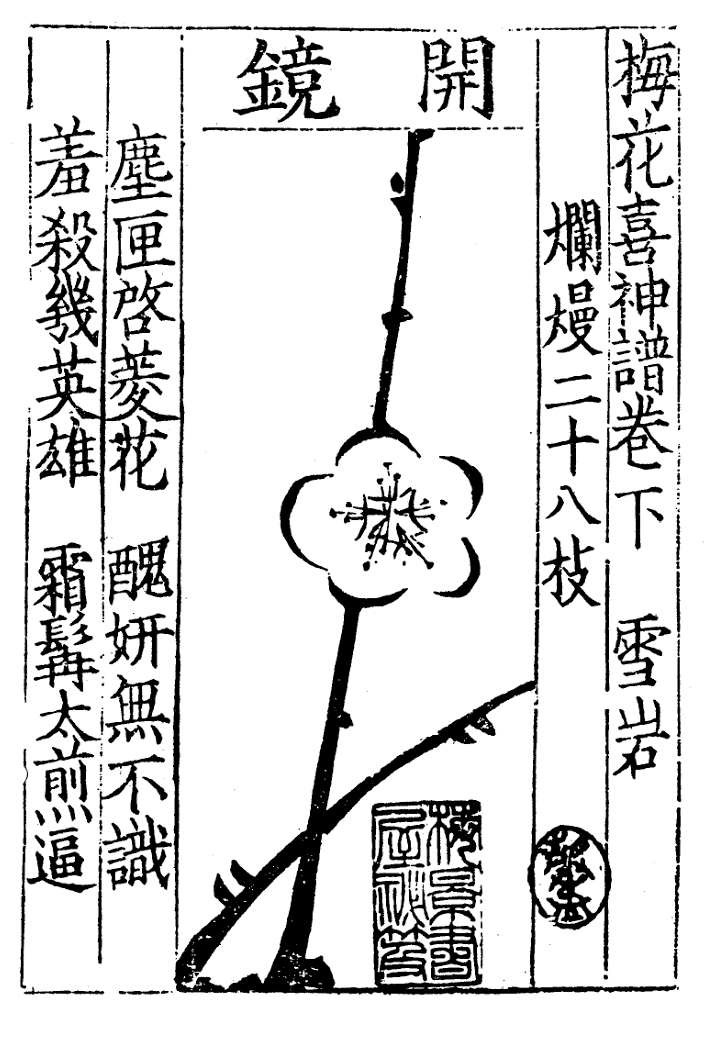
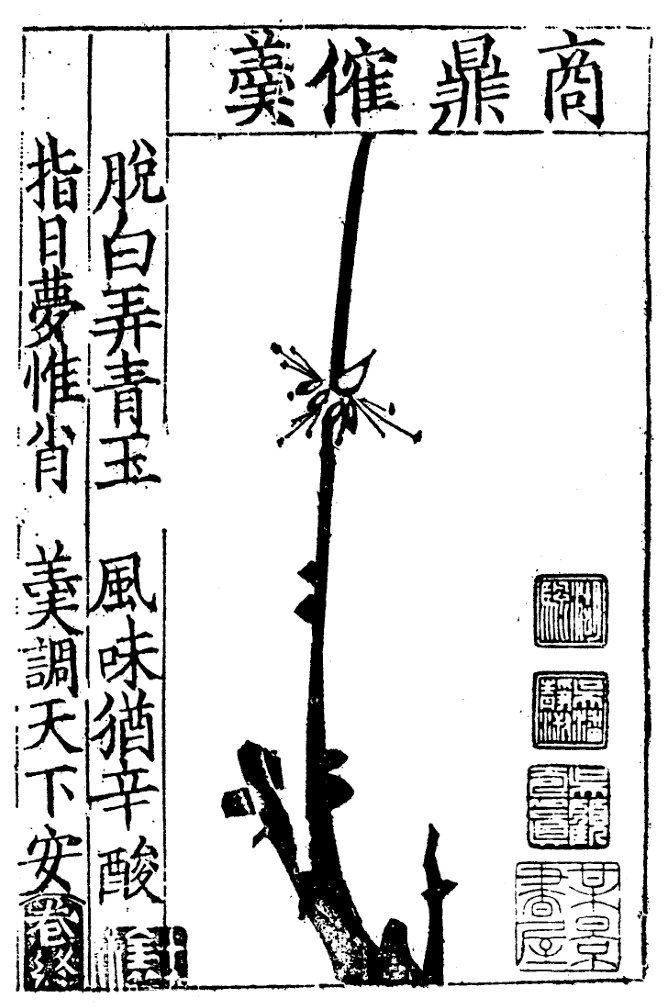
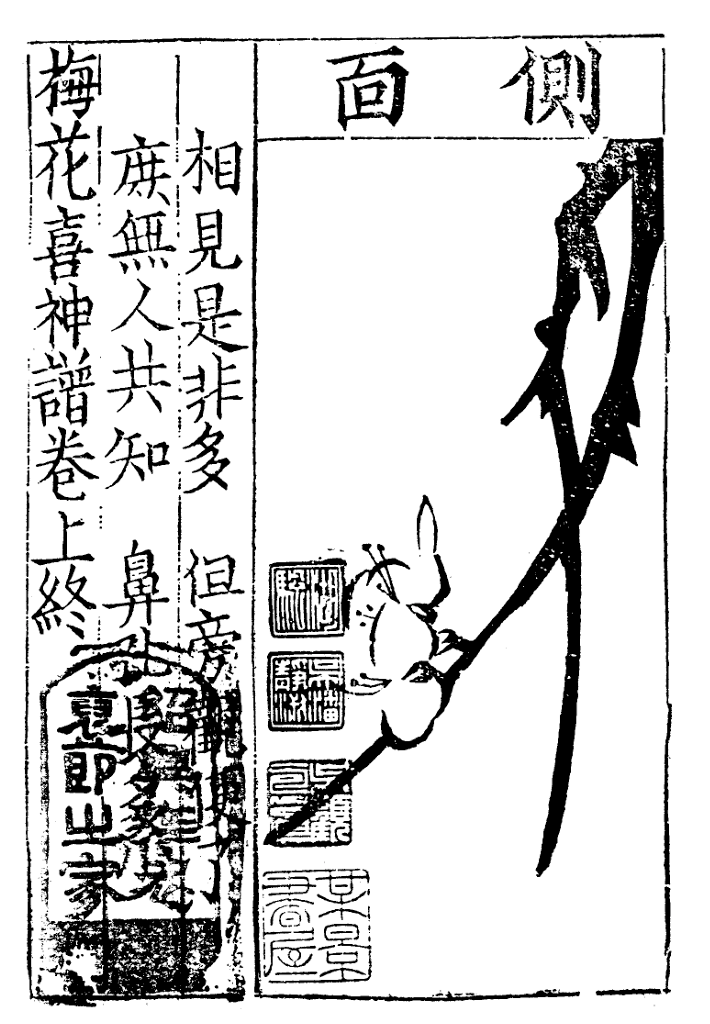
The tripod, originally a cooking implement, eventually became an important accessory in Chinese court rituals, suggesting a political bent: “The soup is seasoned[,] the world at peace.” Indeed, in The Book of Documents, one of the Five Classics of ancient Chinese literature, the emperor beseeches a counsel to teach him to lead well: “Do teach me what should be my aims. Be to me as the yeast and the malt in making sweet spirits, as the salt and the prunes in making agreeable soup. Use various methods to cultivate me; do not cast me away; − so shall I attain to practice your instructions.” Good governance, The Book of Documents suggested, takes balance, skill, and experience.
So might adoring a plum blossom. Written at a time of anxiety and precarity, when the threat of Mongol invasion hung overhead, Sung Po-jen published a book replete with references to the glory days of ancient China, about a flower that blossoms in the dead of winter. As a result, though ostensibly a text on plum blossoms, it is also ambiguous enough to draw interest across historical periods with varied politics and interests. The book has weathered a millennia of winters, literal and otherwise: each time it was pulled under by the tides of history it resurfaced, decades, or even centuries later. Guide to Capturing a Plum Blossom, in both the stories it tells and the story of its existence, is a manifesto on hope. We will need it to see us through this long winter.
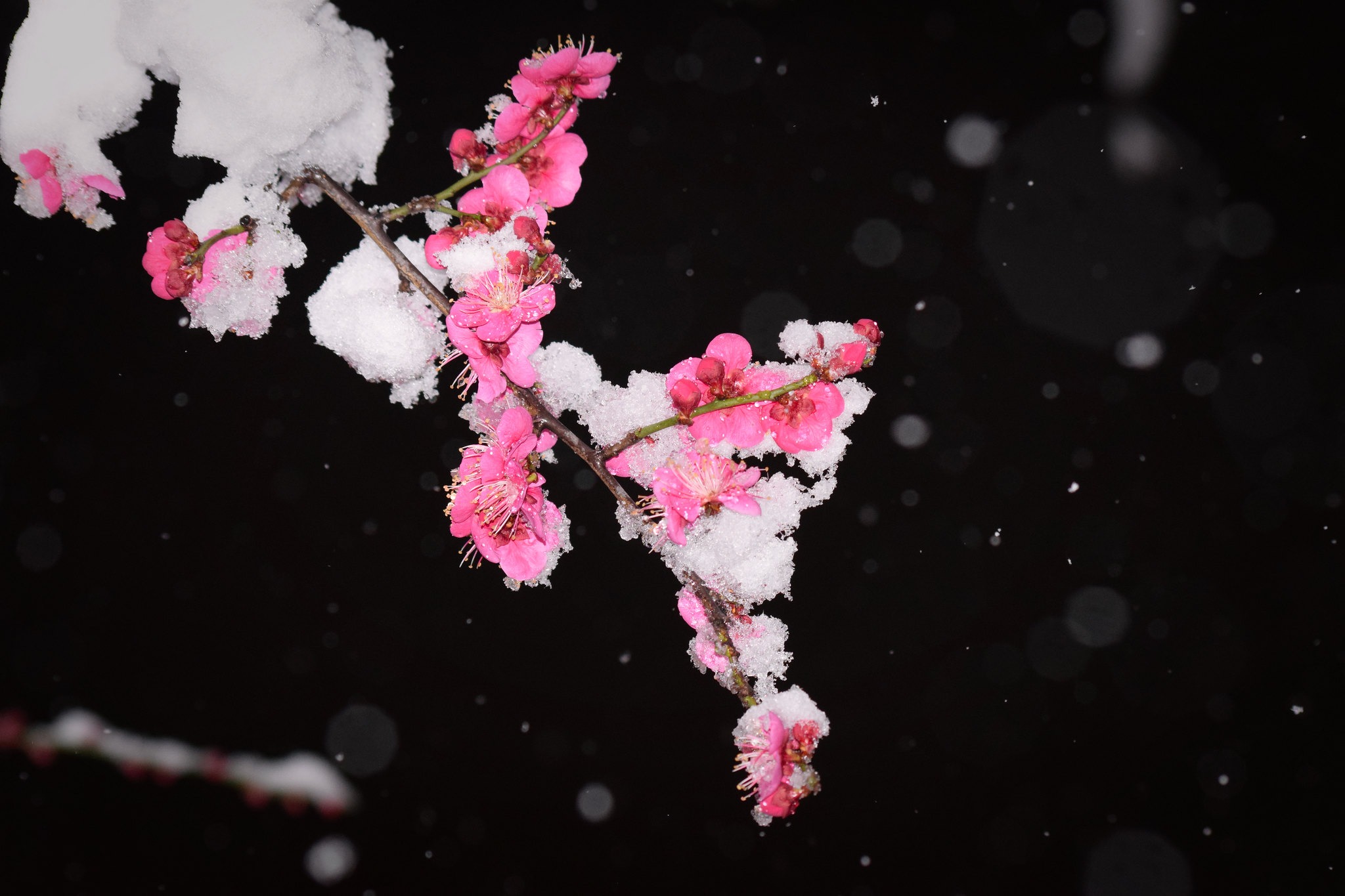
Picture Credit: Raita Futo

